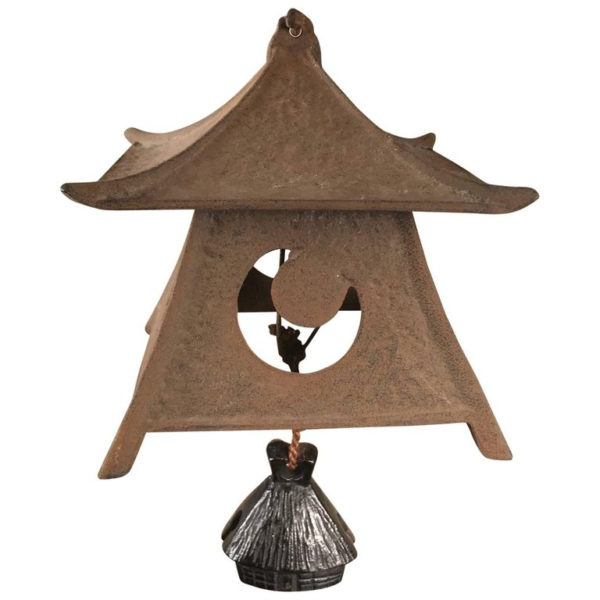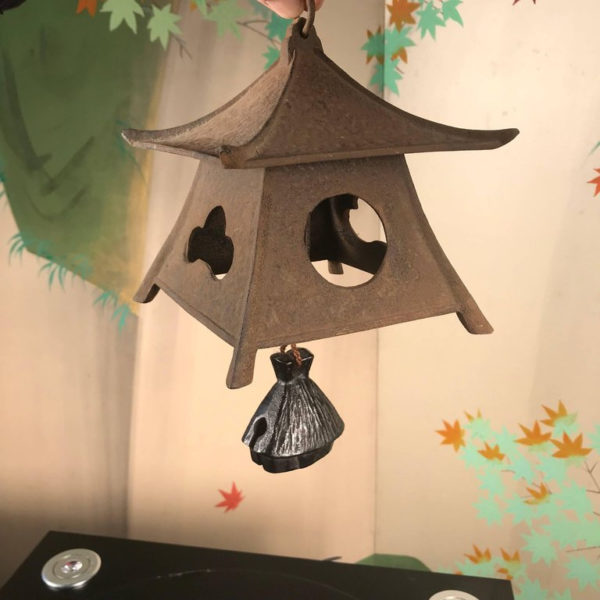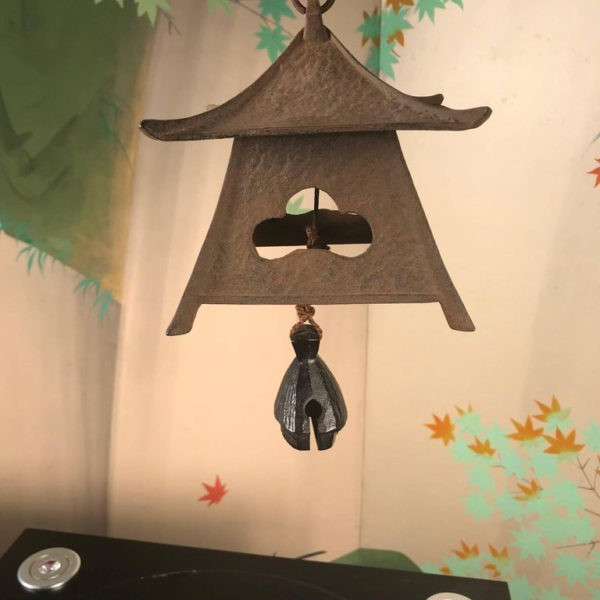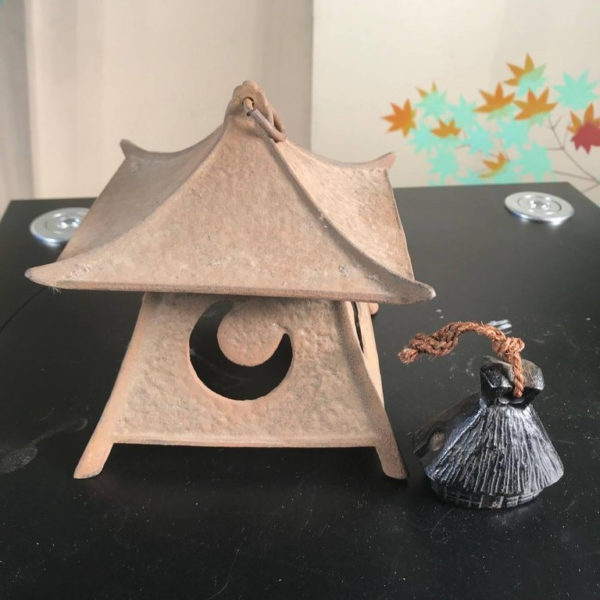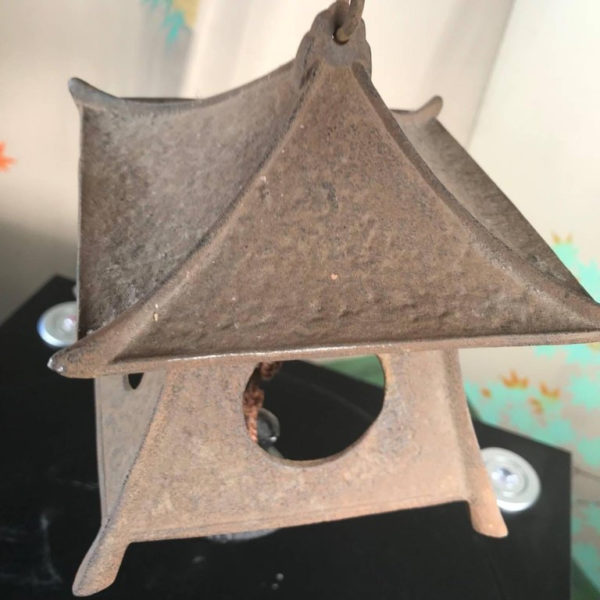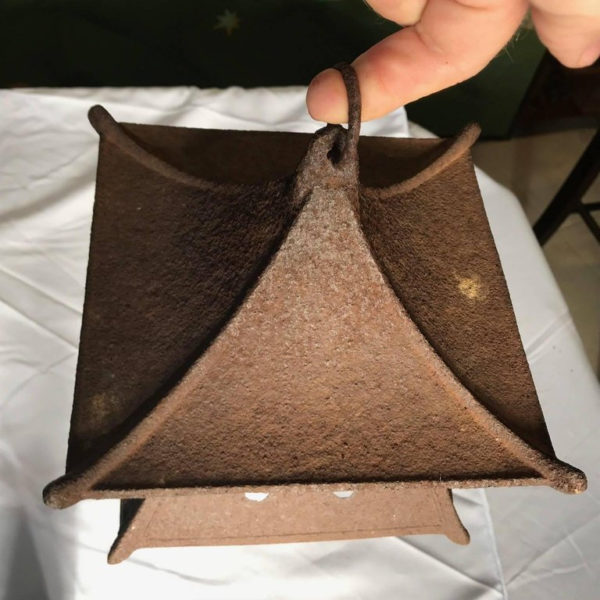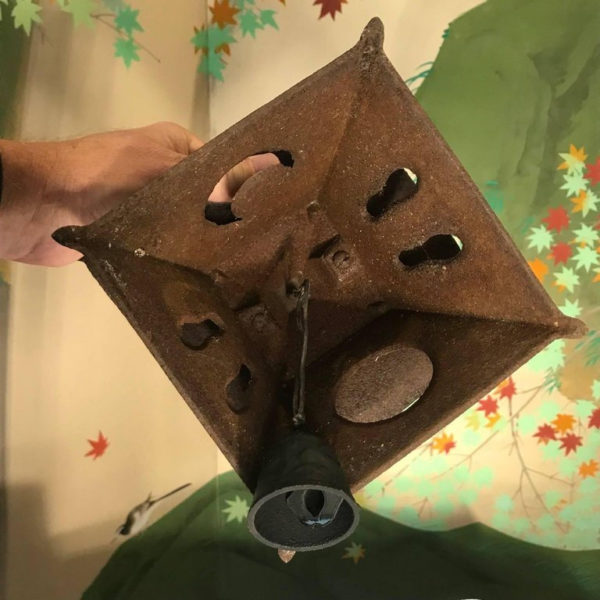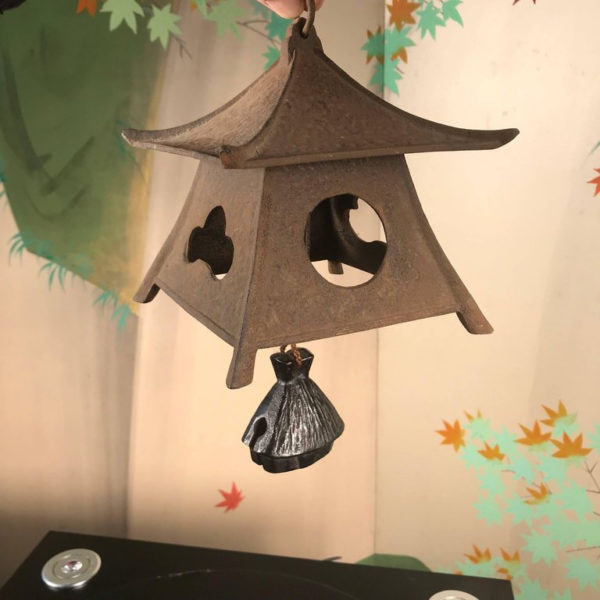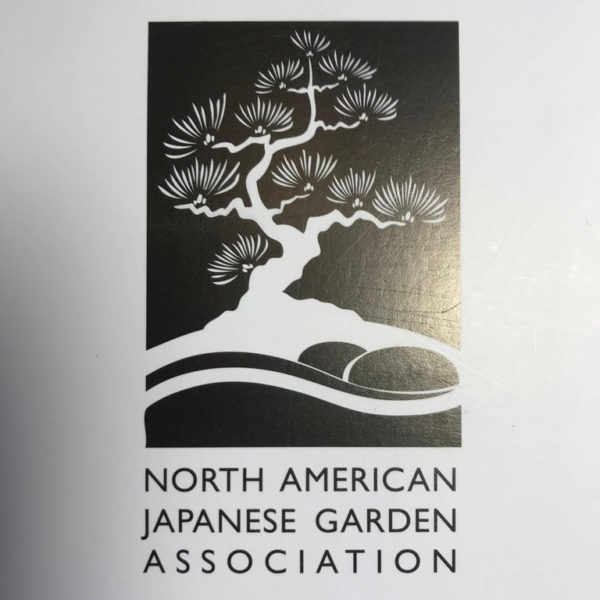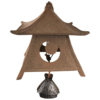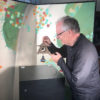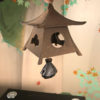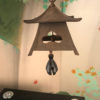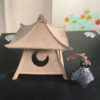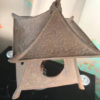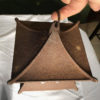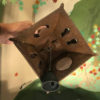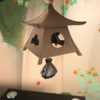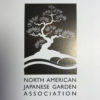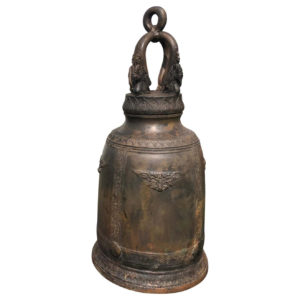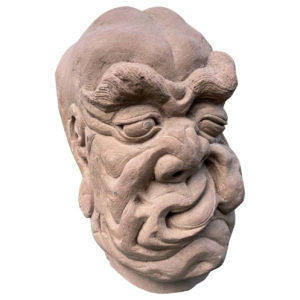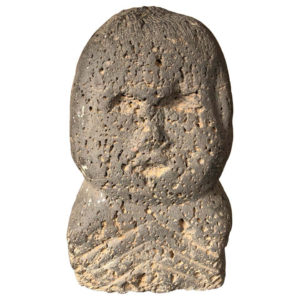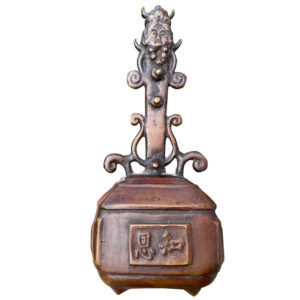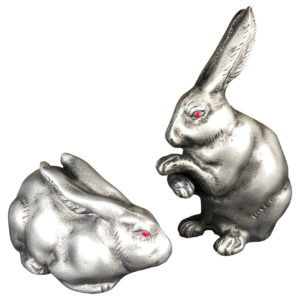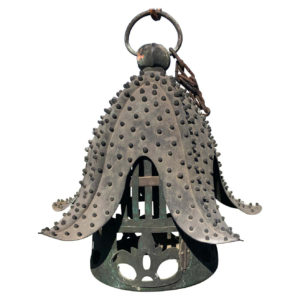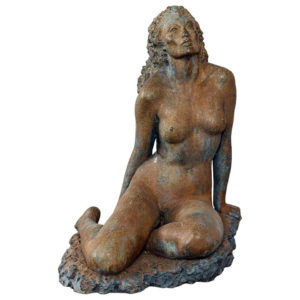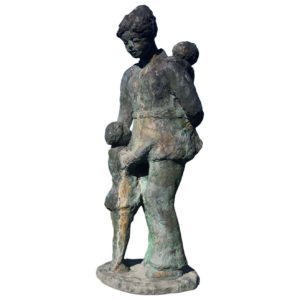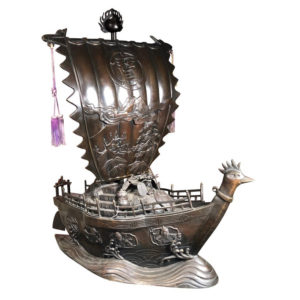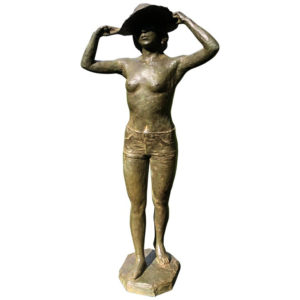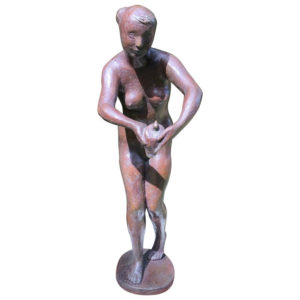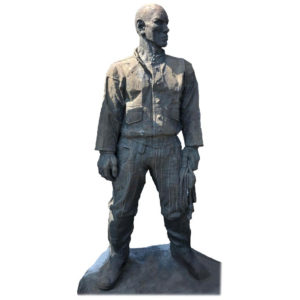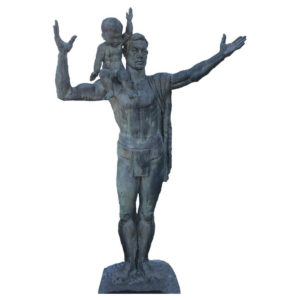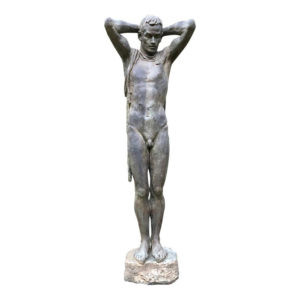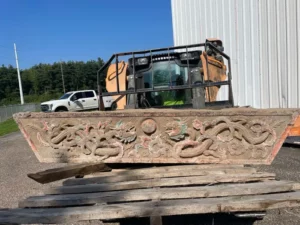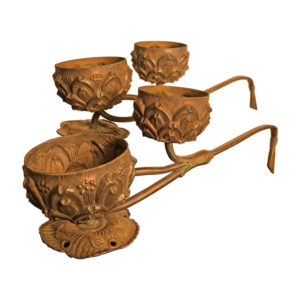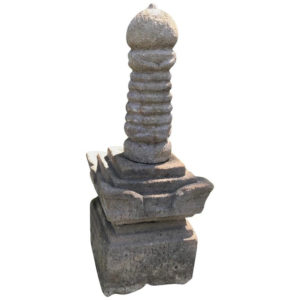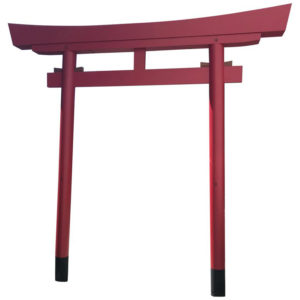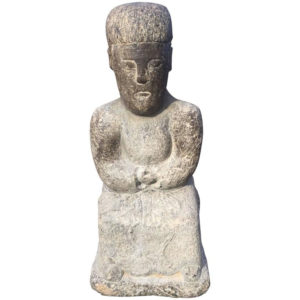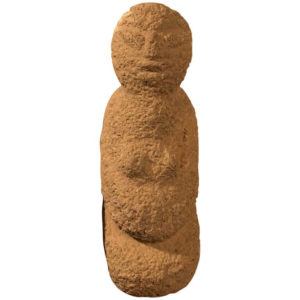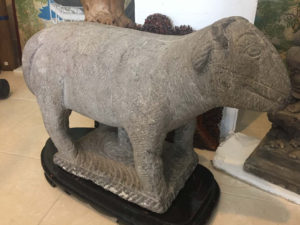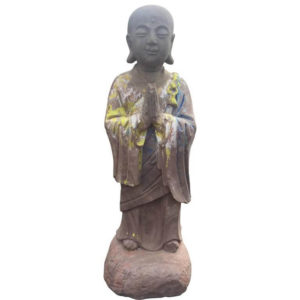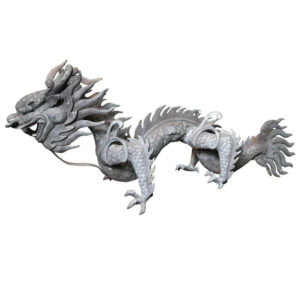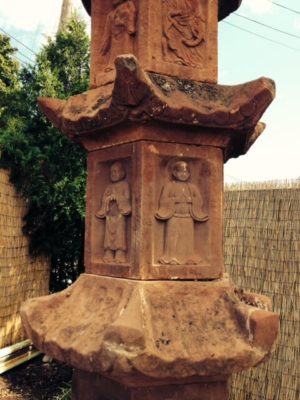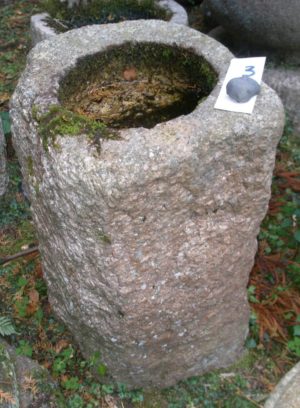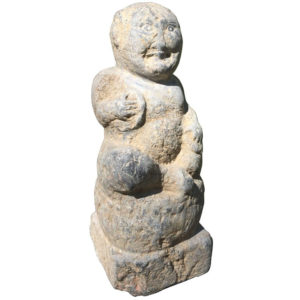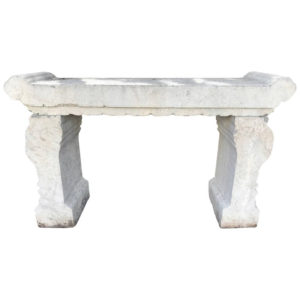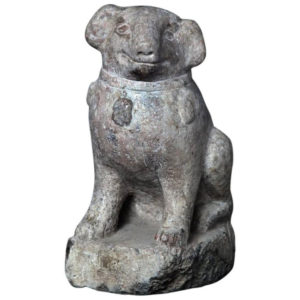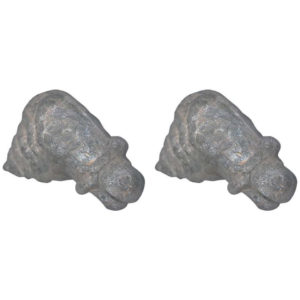Japanese Large Old Lantern and Wind Chime
$560.00
Sold Out
Lifetime GuaranteeEmail to a friend
-Japan, an unusual large-scale handcrafted bronze ringing lantern and wind chime in the form of a Japanese mountain minka farm house that may be suspended in your favourite indoor or outdoor space.
This is the only example of this large-scale form we have seen in over fifteen years of dealing with Fine Japanese garden ornaments. The ornamental clapper is also unusual as it is also caste in the form of a kasuya or minka farmhouse.
Dimensions: 8 inches tall with hanger and 7.5 inches square.
Quality: Crafted from bronze
Good garden candidate, this is an ideal accent size for a small outdoor or indoor zen garden.
Only one.
Provenance: Old Nagoya garden collection.
Lifetime guarantee of authenticity. All our Asian works of art are accompanied by our lifetime guarantee of authenticity.
History of Japanese lanterns:
In Japan a to¯ro¯ (lantern) is a traditional lantern made of stone, wood, or metal. Like many other elements of Japanese traditional architecture, it originated in China. In Japan, to¯ro¯ were originally used only in Buddhist temples, where they lined and illuminated paths and lighted lanterns were then considered an offering. In its complete, original form the lantern represents five elements of Buddhist cosmology: Bottom touching the ground, represents chi, the earth, the next section represents sui, or water, ka or fire, is represented by the section encasing the lantern’s light or flame, while fu¯ (air) and ku¯ (void or spirit) are represented by the last two sections, top-most and pointing towards the sky. These last two sections express the IDEA that after death our physical bodies will go back to their original, elemental form.
Yukimi-do¯ro¯ or legged lanterns have as a base not a post but curved legs and a wide umbrella with a finial. Relatively low, they are used exclusively in gardens and the traditional placement is near water. The umbrella can be round or have from three to eight sides, while the fire box is usually hexagonal. Yu-loosley translated means water reflection. It was probably developed during the Momoyama period, but the oldest extant examples, found at the Katsura Villa in Kyoto, go back only to the early Edo period (17th century).
Item Details
- Dimensions: N/A
Related Art
(802) 279-7601
(802) 279-7601
(802) 279-7601
(802) 279-7601
(802) 279-7601
(802) 279-7601
(802) 279-7601
(802) 279-7601
(802) 279-7601
(802) 279-7601
(802) 279-7601
(802) 279-7601
(802) 279-7601
(802) 279-7601
(802) 279-7601
(802) 279-7601
(802) 279-7601
(802) 279-7601
(802) 279-7601
(802) 279-7601
(802) 279-7601
(802) 279-7601
(802) 279-7601
(802) 279-7601
(802) 279-7601
(802) 279-7601

